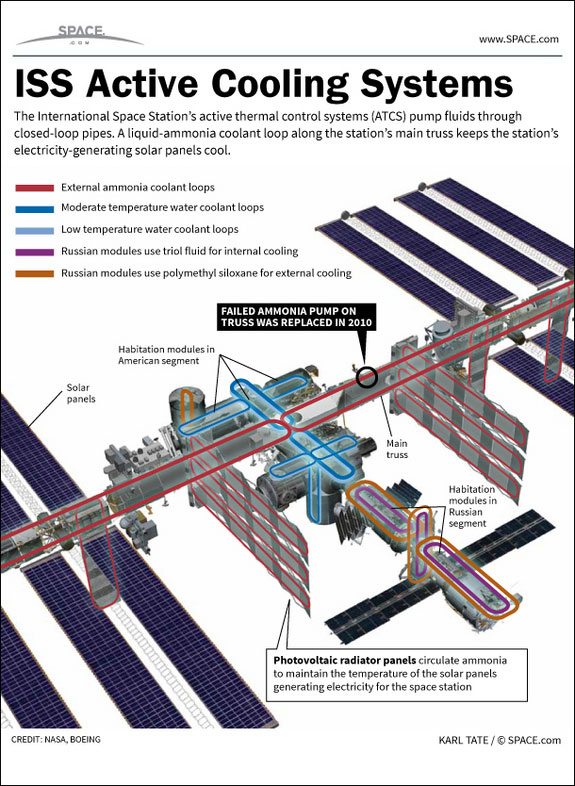UPDATE May 13, 2013: Expedition 35 Flight Engineers Chris Cassidy and Tom Marshburn completed a five-hour spacewalk on Saturday to replace a pump controller box on the International Space Station’s far port truss, NASA officials reported Sunday. Long-term monitoring of the replacement pump will be required to determine whether the issue has been fixed.
May 10, 2013: Astronauts on the International Space Station have discovered a leak of ammonia coolant that could raise the possibility of a partial cooling system shutdown in the near future, NASA officials have reported.
Chilled liquid ammonia is used to cool the electronics associated with the four solar arrays that power the space station by transferring heat through a series of tubes to the space station’s radiator panels for dissipation into space. Considered a critical component of the space station’s Active Thermal Control System, the radiator system consists of seven panels designed to deploy in orbit from a 2-foot-high “stowed” position to a 50-foot-long “extended” position. An overview of the Active Thermal Control System was previously released by Boeing.

The space station also features a Passive Thermal Control System (PTCS) that includes special surface coatings, heaters, heat pipes and insulation.
Astronauts discovered the leak after observing small white flakes of frozen ammonia coolant leaking from the end of the girder-like truss structure of the space station. The leak is reportedly occurring in the same location as an earlier leak first identified in 2007. A spacewalk was organized in November 2012 to reconfigure coolant lines and isolate the issue.
NASA stressed in a statement that the station and its occupants are not in danger, but noted that the increased rate of loss of ammonia would likely force the cooling loop to be shut down. NASA thermal control systems specialists are looking into whether additional imagery is needed to further isolate the leak’s location, and plans are being developed to reroute power as needed to ensure that all systems remain in full operation.






